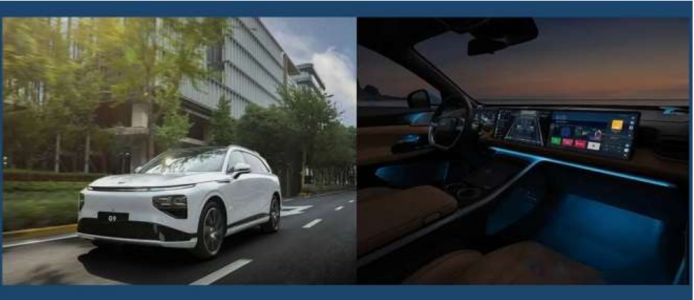Author: Kevin Li
“XPeng’s choice seems to be a signal: for lidar companies, getting designated by automakers does not necessarily mean ultimate victory, nor does it mean mass production and delivery, but that they can meet automakers’ comprehensive needs for market competition, especially in cost control.”
Recently, according to several foreign media reports, the XPeng G9 SUV, which is about to be launched in Europe, will be different from the Chinese version. Unlike other domestic counterparts, XPeng G9 will remove two lidars on models in Netherlands, Sweden, Denmark and Norway. Martin Stegelmeier, head of XPeng’s European product planning, told “European Automotive News” that the removal of lidars from G9 was due to cost considerations.
“The cost of lidars is very high. We want to stand at the forefront of ADAS in European car manufacturers, but we must also provide competitive prices. With lidars, we will not be able to do this,” the executive said.

In Europe, XPeng seems to regard the cost of cars as a key selling point. For example, in the Dutch market, the starting price of G9 is 57,990 euros (more than 20% lower than its competitors like BMW i3X), while the starting price of the latter is 71,488 euros in the Netherlands.
However, compared with mass-produced brand electric vehicles such as the Hyundai Ioniq 5 (48,295 euros) and the Tesla Model Y (recently reduced to 47,970 euros), G9’s price is not so competitive.
But XPeng is confident that it can win customers with its higher-quality interior, fast charging electric architecture, and spacious space. For example:
G9 is 4891 millimeters in length, while Model Y is 4750 millimeters in length.
Like Ioniq 5 and its sibling model Kia EV6, G9 adopts an 800-volt electric architecture that increases charging speed to a maximum of 300 kW, faster than Porsche Taycan. XPeng claims that at the correct fast charging station, increasing G9’s battery from 10% to 80% only takes 20 minutes.
In China, XPeng Motors positions itself as an “intelligent” electric car company, emphasizing its focus on technology.
Although the models in these markets do not have LiDAR, the G9 is still equipped with 29 sensors, which can assist the vehicle in performing driving functions such as adaptive cruise control, lane centering, and active lane change.
As for whether XPeng G9, which has “cut off” LiDAR, can open the European market with this move, it is still unclear. However, it is worth reflecting on the decision of XPeng G9 to abandon LiDAR in some models. Today, it is A that was removed, but will it be B tomorrow?
Ultimately, the car-mounted LiDAR is essentially an automotive component, and its development must inevitably follow the evolutionary logic and basic rules of the automotive component industry. Faced with a complex and fiercely competitive environment, the demand for cost reduction from automakers is objective and long-term, and LiDAR companies need to do more exploration and effort on the road of cost reduction to avoid becoming the next “cut-off”.
This article is a translation by ChatGPT of a Chinese report from 42HOW. If you have any questions about it, please email bd@42how.com.
